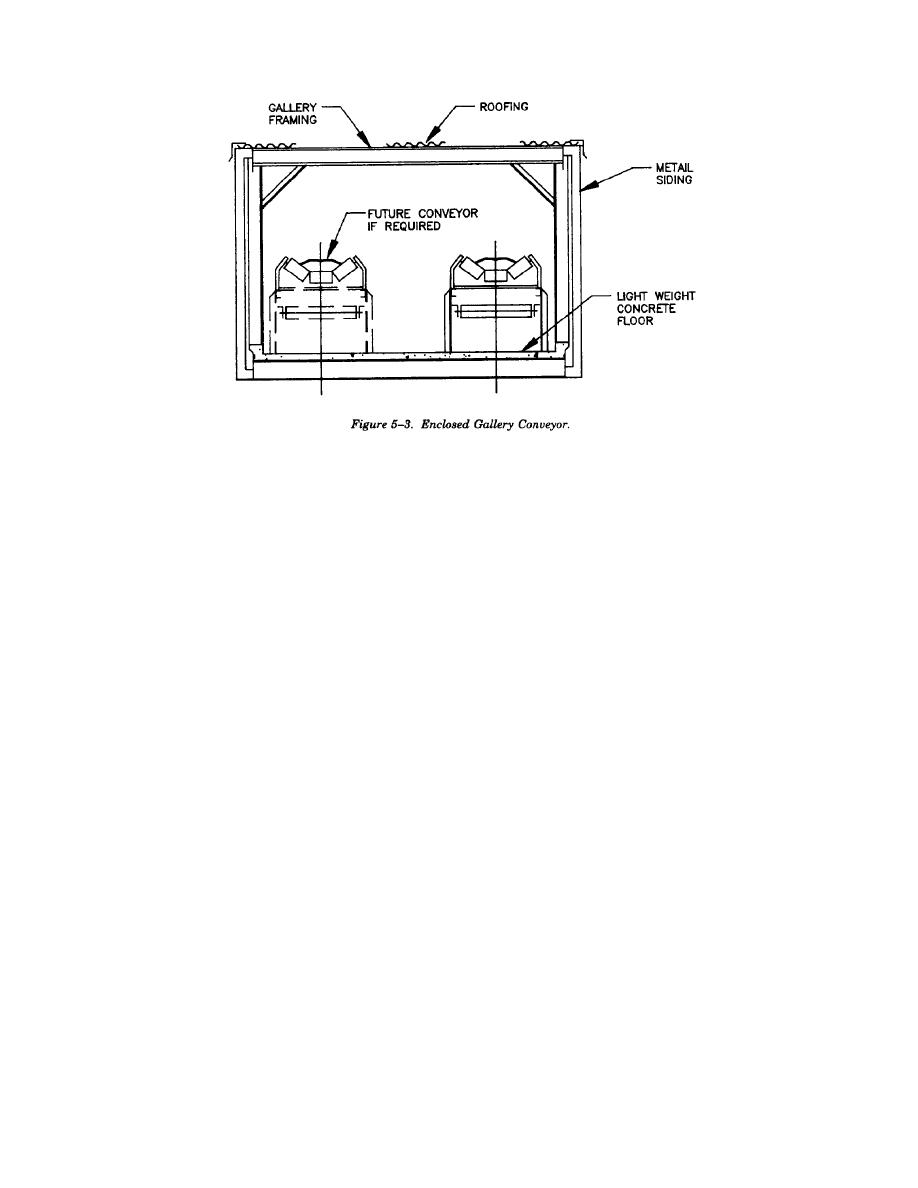
TM 5-810-15
f. Idlers. Idlers will be selected for a specific
ment of at least three percent of the conveyor
condition since they provide the support and pro-
terminal centers.
(1) Counterweight will be adjustable +/-20
tection for the belt and material load and also
influence the overall design of the conveyor. Im-
percent from the calculated weight. Counterweight
proper idler selection directly affects the belt
will be designed to limit conveyor belt sag to 2
tensions and thus the final horsepower require-
percent and provide adequate traction for the drive
ments.
pulley. Loading zone belt sag will be maximum 1
(1) Troughing idlers will have a minimum of
percent.
three 5-inch diameter equal length interchangeable
(2) Screw type takeups are satisfactory for
rolls, with the two outside rolls inclined at 35
conveyors less than 40 feet in length, but should be
degrees from the horizontal.
avoided if at all possible.
h. Conveyor belt selection. One of the most im-
(2) At least 3 rubber type impact idlers,
spaced a maximum of one foot apart or urethane
portant design considerations is the selection of the
bar loading sections will be placed under each
conveyor belt. The belt has to withstand both the
conveyor belt loading point. As an alternative,
initial start up and operating tensions that are
cradles composed of energy absorbing bars may be
encountered within the system, be impact resis-
used under the loading zone to cushion the impact.
tant and be suitable for the material being con-
In installations where more than one cradle is
veyed.
required to cover the length of the loading zone, an
(1) The conveyor belt selection must be
impact idler will be placed between the cradles to
capable of transmitting the maximum belt tension in
assure proper belt carriage.
the conveyor, include the minimum number of belt
(3) Self aligning carrying and return idlers
plies to support the load, pulley series, take into
should be placed at 80-foot centers along the length
account the type of material to be conveyed, and
of the conveyor.
minimize belt cost to cover the above items.
(4) All idlers will have a single point grease
(2) Conveyor minimum belt cover
thicknesses will be 1/16-inch thick bottom cover
lubrication system that is accessible from the
walkway side of the conveyor.
(belt side which contacts the idlers and pulleys) and
c-inch thick top cover (belt side in contact with
(5) Idler construction, selection and spacing
will be based upon Conveyor Equipment Manufac-
the material).
turers Association (CEMA) standards.
(3) The conveyor belt selected must be
g. Belt take-ups. Belt take-ups are necessary to
capable of withstanding all startup and operating
maintain the proper belt tensions for the drive
tensions that will be encountered within the
pulley traction and to maintain correct amount of
conveyor. For a multiple ply conveyor belt, the unit
belt sage between idlers. Gravity type take-ups
tension is expressed in pounds per inch belt width
should be provided on all conveyors with adjust-
(piw) or pounds per ply inch (ppi). A 30-inch wide,
5-6


 Previous Page
Previous Page
